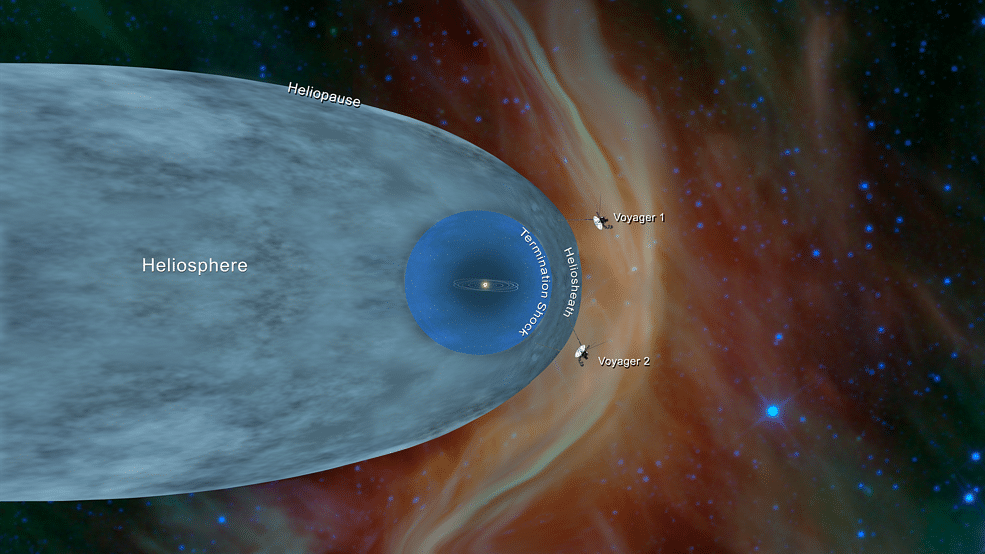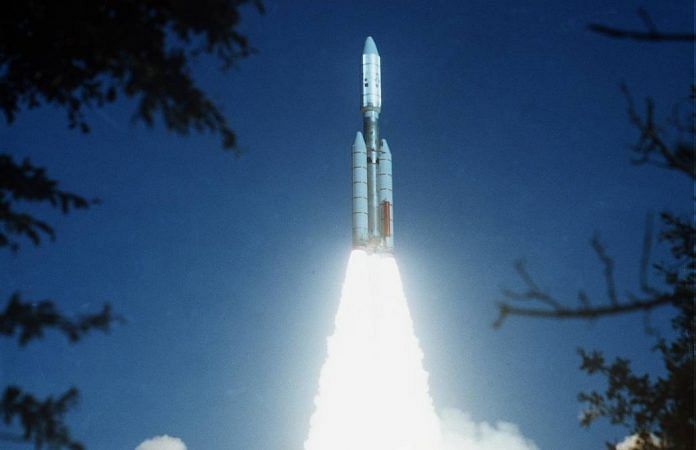Voyager 2, which has flown in space since before any millennial was born, was launched to study the outer solar system.
Bengaluru: Forty-one years after its launch, NASA’s Voyager 2 has become only the second human-made object to enter interstellar space. The feat, which saw Voyager 2 cross a boundary called the heliopause, comes six years after the spacecraft’s twin, Voyager 1, first pulled it off.
Although Voyager 2, travelling at breakneck speed, has enough velocity to eventually escape the solar system, it is still well within it.
While NASA confirmed the development Monday, Voyager 2 had entered interstellar space on 5 November.
Voyager spacecraft
The two Voyager spacecraft were launched separately in 1977, to study the outer solar system.
As the four outer planets — Jupiter, Saturn, Uranus, Neptune — were aligned favourably, Voyager 2 zipped past them all to become the only spacecraft to visit the ice giants Uranus and Neptune, while Voyager 1 launched a little later to pass close to Saturn’s largest moon, Titan.
After crossing the planets, the two went their separate ways in an effort to exit the solar system.

The Voyager spacecraft also famously carry some cargo from Earth: 12-inch golden phonograph records that contain pictures, symbolic descriptions, and sounds from Earth. Voyager 1 is currently the most distant human-made object in space.
Both craft are equipped with a camera and instruments that operate across different parts of the electromagnetic spectrum. They also contain magnetometers to measure the sun’s magnetic field.
Also read: When NASA probe kisses the Sun, a star will spill long-held secrets
The sun and its boundaries
The sun’s intense magnetic field sends charged particles radiating outwards in what is called the solar wind.
This stream creates a “bubble” of plasma around the sun, protecting the region inside from the surrounding interstellar medium’s pressure. This bubble is called the heliosphere.
The solar wind flows far out beyond the outer planets, extending up to 90 astronomical units (AU), where 1 AU is the distance from Earth to the sun, 150 million kilometres. For reference, Neptune orbits the sun at 30 AU.
At 90 AU, a phenomenon called termination shock is observed. This is when the solar wind slows from supersonic speeds to below the speed of sound, creating a shock wave.
Beyond this exists a region of heliosphere called the heliosheath.
This is where the solar wind mixes with interstellar medium, causing turbulence and creating large bubbles of charged plasma. It begins at 100 AU, and the bubbles were detected by both Voyager craft.
After this comes heliopause, which is the theoretical boundary where the solar wind comes to a halt, stopped by the interstellar medium. Here, temperature drops drastically and the magnetic field direction switches, indicating a craft has passed the boundary.
Voyager 1 passed the termination shock in 2004, the heliosheath in 2010, and the heliopause in 2012. Voyager 2 did the same in 2006, 2008, and 2018, respectively. Both craft passed each of these boundaries at different distances from the sun, indicating that the heliosphere does not spread out uniformly and symmetrically.
Also read: NASA reaches for the Sun, and a mother whale in mourning in the Pacific
Solar system and interstellar space
Entering interstellar space does not indicate reaching the end of the solar system, however.
Sun’s gravity is so strong, the solar system stretches out to billions of kilometres beyond the heliopause. Neptune and Pluto are barely at the one-thousandth point of the solar system from the sun.
The trans-Neptunian region, which consists of the Kuiper belt and is home to several icy bodies and purported mysterious planets, extends from 30 AU to 150 AU. Four dwarf planets (Pluto, Eris, Haumea, Makemake) are also here.
From 100 AU to 2,000 AU are several other icy bodies like Sedna and other detached bodies (‘detached’ from the influence of Neptune). From 2,000 AU to 20,000 AU is the disc-shaped Inner Oort Cloud where several comets originate, and 20,000 AU to 100,000 AU in a sphere around everything else is the Outer Oort Cloud.
Voyager 1 and Voyager 2 are at 144 AU and 120AU from the sun, respectively. The temperatures are already too cold for the fuel to run much longer, but mission scientists hope that the craft function at least till 2027, making it a 50-year mission.






